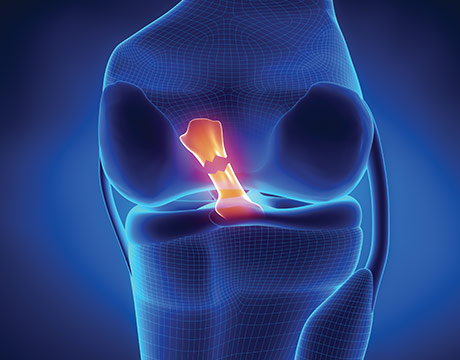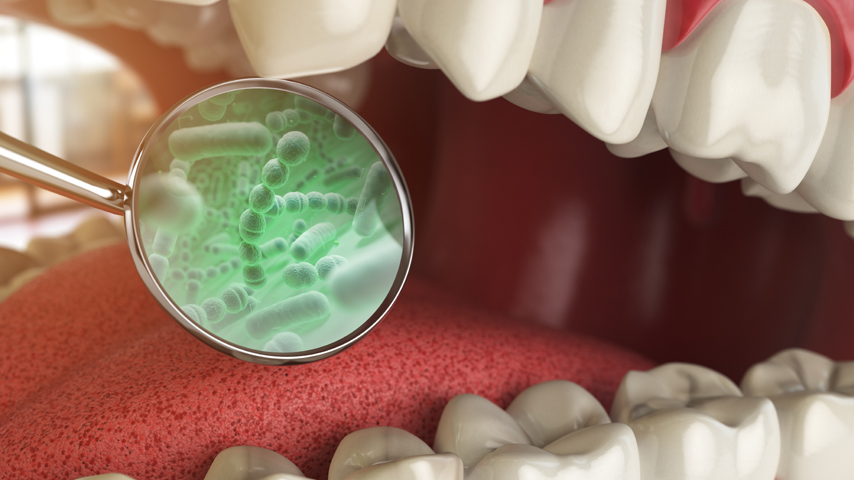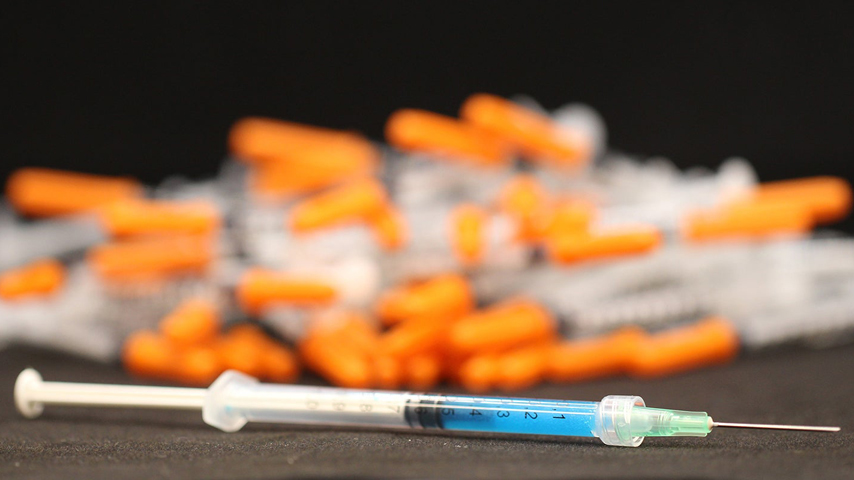Research into Kids’ Knees Could Prevent ACL Tears
Research into Kids’ Knees Could Prevent ACL Tears


The anterior cruciate ligament threads through the middle of the knee joint. It is the most-commonly torn ligament in sports. Image: Getty
Every fall football fans keep an eye on the news to watch for season-ending knee injuries. Over the last few years, torn anterior cruciate ligaments ended the seasons of stars such as Julian Edelman, Deshaun Watson, and Carson Wentz. While these injuries are high profile, the athletes most likely to suffer an ACL injury are the so-called pony-tailed hooligans. In the United States, the highest incidence of ACL injury is to females 14 to 17 years old, many of whom are soccer players. In fact, females of all ages suffer these knee injuries between two and seven times more frequently than males.
Read ASME’s Top Story: Air Taxi Aces Test Flight
Surgery is often required to repair torn ACLs, and surgeons are working with mechanical engineers to better understand the physiology of children’s knees in order to better repair the injuries, or avert them entirely. These engineers and biomechanics specialists are applying techniques normally reserved for hard materials like steel to soft tissue.
Ellen Arruda, a professor of mechanical and biomedical engineering at the University of Michigan, has research interests ranging from mechanical behavior of materials including polymers, elastomers, and soft tissue; to tissue engineering of tendon and muscle constructs; and to modeling of growth and functional adaptation in soft tissue. But she also collaborates with surgeons who conduct ACL reconstructions.
“The most often cited reason for the increase in these injuries is an increase in the number of children playing sports such as soccer and basketball, year-round, sometimes on multiple teams at once,” she said.
Read Our Readers’ Pick: YouTube Star Goes Viral with Glitter Bomb
Greg Myer knows the value of engineers to surgeons. Myer is a biomechanist who serves as director of research at the Human Performance Laboratory for the Division of Sports Medicine at Cincinnati Children’s Hospital Medical Center, and he holds a position at the College of Medicine at the University of Cincinnati.
“Mechanical engineers can do many things to support the surgery, the first being helping surgeons select the correct ligament graft,” Myer said. But Myer is also studying the way young athletes run and jump and kick to find ways to learn how ligaments can be spared from excess stress to begin with.
“We’re working on the prevention side,” he said.
The map of the knee looks more like a complicated interstate highway interchange than a simple joint, with four bones, thigh and calf muscles, bits of cartilage, and the meniscus that cushions the bones. Ligaments thread around and between the bones to keep the femur, tibia, fibula, and patella together and play a critical role in stabilizing the joint during loading.
The ligaments include the posterior cruciate ligament, the medial collateral ligament, and the lateral collateral ligament. But the anterior cruciate ligament threads through the middle of the joint, making it difficult to see and susceptible to injury. It’s the most-often torn ligament in the knee and in sports. Typically, the ACL is injured during landings that involve rapid deceleration and direction change.
Full tears of the ligament tissue require complete surgical replacement if a return to physical activities is desired.
“There’s a lot of debate over the best graft for this,” Myer said. “The patella tendon that attaches the tibia to the kneecap is a common choice, and the hamstring tendon has increased in popularity, and then there’s also the allograft from a cadaver.”
Listen to the All-New ASME TechCast podcast: Innovations in Biomaterials Create New Roles for Engineers
Current methods of ACL replacement generally work well, as they stabilize the knee and allow people to return to sports. But the graft replacement technique doesn’t work for everyone, especially kids because they’re still growing. Grafts from a cadaver have the highest failure rates, with estimates of about 20 percent.
“We think the grafts are too stiff,” Arruda said. “It’s usually an adult cadaver graft going into a young child, so it’s overdesigned for that child in terms of stiffness.”
The ideal replacement for a torn ACL restores native anatomy and function to the knee. Mounting evidence, however, suggests current strategies alter the biomechanics of the joint.
Instabilities are thought to develop over time through a graft tissue that becomes more lax than the native tissue through loosening, mechanical degradation, or both.
As a result, young athletes are at a greatly increased risk for a second ACL injury. Nearly one in four youths who return to high-risk sports sustain another ACL injury at some point in their career. For patients younger than 20, the increased risk for sustaining an ACL graft rupture is as high as threefold, with the risk higher for females than males.
Read More on Innovation: Drone Deploys in Just Minutes but Flies for Hours
Engineers are working with physicians, surgeons, and other healthcare professionals to better understand the biomechanics of ACL injury and how to repair it more permanently.
“Mechanical engineers can help with the tensile strength of the graft and help us learn how the graft degrades over time following the reconstruction and before it starts to build back up in strength,” Myer said. “From the surgeon’s standpoint, helping them understand the best grafts is probably the most direct link to helping in their selection for reconstruction.”
Experiment and Simulation
Kaitlyn Mallett saw this first hand, as she previously worked as a graduate student research assistant in the Department of Mechanical Engineering at the University of Michigan. With Arruda as her advisor, she went on to get her doctorate in mechanical engineering. Her dissertation research involved experimentally characterizing native ACL and replacement grafts to define their mechanical properties.
It’s a challenge researchers have been grappling with for decades.
“The ACL is actually quite complex,” Mallett said. “It’s made up of two different sections that twist on each other, and as you flex the knee, it twists and untwists, but it’s always taut. It’s very complicated to get the mechanical properties without relieving that tension.”
Understanding the relationship between the various parts of the knee requires a combination of experiments to characterize the mechanical properties of the tissues and plugging those values into a computer models that employ finite element analysis to simulate the stresses that running, jumping, and landing place on the joint. Even the model is informed with clinical data.
“The model starts with an MRI of the knee,” Arruda said. “We convert that into a finite element mesh and translate that from the MRI data file to volumetric elements used in finite elements. That involves taking every slice of the MRI and finding the outline of each tissue in the knee. We call that segmenting the knee.
“The model is made of elements that are deformable, so you create the overall geometry and break it into elements and then apply properties to each section,” Mallett added.
Read More on Bioengineering: The Engineering Behind Brain Research
To obtain the data on the mechanical properties of the tissues, Mallett took donated tissue and cut out all the soft tissue except for the ACL. She aligned the ACL in a well-known loading state and then subjected it to tests to provide the mechanical properties needed for a computational model.
Some of this may sound like working with traditional engineering materials, but Mallett said there are important differences. Ligament tissue doesn’t display co-linear behavior like steel in the linear regime. The ACL has several different kinds of parts to it that don’t behave the same way.
It’s also non-linear, meaning it doesn’t exhibit a one-to-one response when strained. Soft tissue like ACL is compliant and begins to stiffen as you pull on it because it has a crimp in the fiber that straightens out.
“That nonlinearity is difficult to capture,” Mallett said.
It also exhibits a time-dependent response. If you pull it more quickly, it will behave differently than if you pull it slowly. “By taking a large number of samples and pulling them to a certain distance, I was able to get the stress-strain curve,” she said.
Risk Factors
Experimental biomechanics is also helping inform the way post-surgery rehabilitation is conducted. Theory says rehabilitation after ACL reconstruction should focus on addressing the underlying neuromuscular problems that led to the injury. Myer’s lab at Cincinnati Children’s Hospital was established in part to put those theories to the test.
“Instead of just looking at the problem,” Myer said, “we look at the mechanisms causing it.”
Working with children and young adults, the biomechanical engineers study these athletes as they mature to look for physiological changes. They also do full body motion analysis, and if they’re injured, they determine the biomechanics that led to the injury.
“Landing in a knock-kneed position is the number one risk factor for injury,” Myer said.
With this data in hand, the biomechanical engineers have begun to explore steps athletes can take to prevent injuries from occurring. Myer’s team recommends performing neuromuscular training, which is basically strength- and power-building exercises that translate into support to reduce the risk of injury.
“Our research has shown we can reduce ACL injuries by more than 50 percent by doing these,” Myer said. “Ultimately, we don’t want the ACL to be loaded that much. We want the forces to be absorbed to the bone structures and the muscular activation.”
Read More on Teens and Limbs: Young Engineer Takes Great Strides with Prosthetic Foot
Arruda’s team is looking at another knee injury risk factor: repetitive loading. That means that ACL injuries are essentially a fatigue failure.
Engineers know that in metals, repetitive or cyclic loading at a load lower than the yield or tensile strength can lead to failure. Biomechanical engineers at Michigan and elsewhere are studying fatigue in the ACL to learn more about these failures in pliable human tissues.
“How a ligament accumulates damage is still unknown,” Arruda said. “Once we understand that, we can start thinking about the concepts we apply in fracture mechanics of other materials to understand how much damage a ligament can tolerate.”
How would fatigue occur in a knee? “If you play high-intensity sports year-round doing essentially the same move over and over again without sufficient rest and recovery time, you may be at risk as a young person of tearing a ligament,” Arruda said. “The overall hypothesis I’m trying to explore is that the damage can and does accumulate, and healing can occur as well, given time.”
A third side of the knee equation is also coming into focus, Arruda said. “Engineers are engaged in tissue engineering solutions to replace a torn ACL. That’s also something I’ve worked on, again with collaborators including an orthopedic surgeon and faculty members in the med school.”
Their research has spun off a startup company called STEL Technologies to commercialize the technology. “We developed a tissue-engineered graft that could be used as an ACL replacement that actually remodels and grows in vivo to restore native biology and function,” she said.
Armed with better knowledge of what causes ACLs to tear, trainers and physicians will be able to better prevent the injuries. Athletes will be trained to run, jump, and land in ways that spare the ligaments from overstress. Physicians will constantly monitor the knees for accumulating damage and prescribe measures to mitigate the risk.
“My vision is to one day have an MRI be a routine part of a young athlete’s annual checkup. Using a patient-specific computational model of the athlete and replicating her biomechanics, we can assess her injury risk,” Arruda said.
The hope is to one day relegate ACL injuries from the sports page to the history books.
Tom Gibson, P.E. is a consulting mechanical engineer specializing in machine design and green building based in Milton, Pa.
Read More Exclusive Stories from ASME.org: Five Job Interview Questions Young Engineers Can Expect Lighter Axle Reinvents Drivetrain. Does Detroit Care? Engineers Making Waves in Aquaculture
My vision is to one day have an MRI be a routine part of a young athlete’s annual checkup. Prof. Ellen Arruda, University of Michigan



